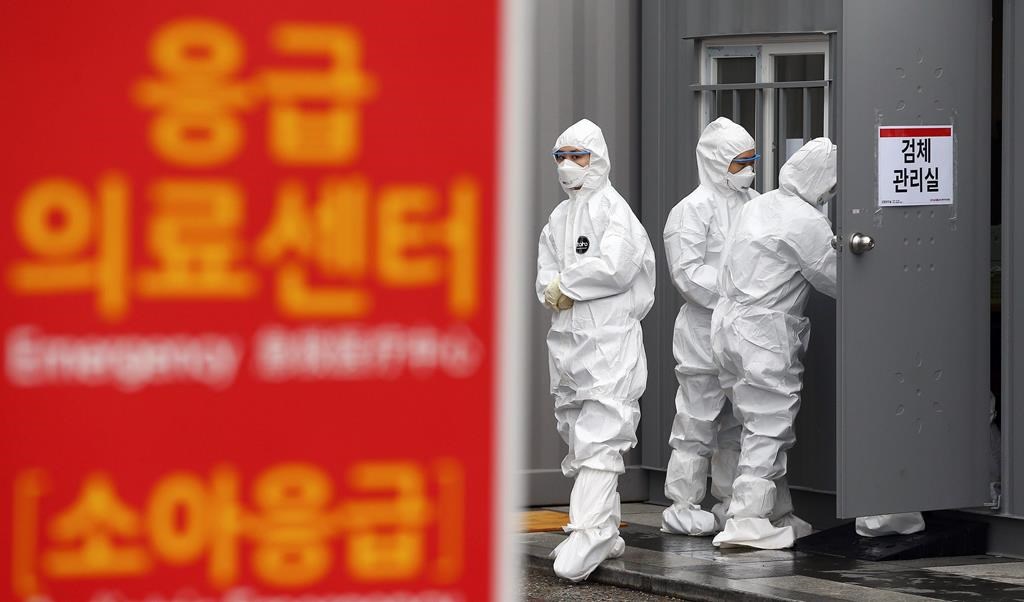As Ontario grapples with rising COVID-19 case numbers, containment remains the key to battling the outbreak of the novel coronavirus disease.

Countries like Italy, Iran and the United States continue to be overwhelmed trying to care for COVID-19 patients as worries grow that Ontario could soon be in the same situation.
South Korea, however, has emerged as a global beacon of hope after the country had major success in reducing its case numbers. After a peak of 909 confirmed cases on Feb. 29, South Korea’s numbers have rapidly dropped and are now in the double digits — on Tuesday, just 79 new cases were reported.
In a news conference on Wednesday, Ontario Health Minister Christine Elliott said the province is looking at South Korea’s model.
While South Korea’s population is vastly larger than Ontario’s, its per-capita testing for the novel coronavirus that causes COVID-19 has been much higher. The republic ramped up testing immediately after a handful of cases were first identified, and it has also made the process simple and easily accessible to its population.
More than a quarter-million residents have been tested for the virus, with the ability to conduct up to 20,000 tests a day at 633 sites. South Korea is utilizing pop-up facilities and drive-thru clinics.
“We acted like an army,” Lee Sang-won, an infectious diseases expert at the Korea Centers for Disease Control and Prevention, told Reuters.
South Korea has also aggressively pursued contact tracing, which, in turn, has resulted in case isolation.

Ontario continues to have trouble keeping pace with the aggressive testing required to identify and isolate cases due to a lack of testing kits.
“We don’t think there’s enough tests in Ontario,” Dr. David Williams, the province’s chief medical officer of health, said on Tuesday.

Get weekly health news
Those tested are also facing long wait times of up to four days before getting results, however Elliott says the province is working to cut down that time frame.
“A four-day wait is not acceptable, and so we are working on doing much better than that, and I anticipate that we will be caught up very shortly with the lab tests,” Elliott said on Wednesday.
The province has boosted lab capacity to be able to conduct 2,000 tests a day with the hope of continuing to increase that number.
“We have ramped up our lab capacity as significantly as possible and will do more as we need to. Events are quickly evolving, and we are trying to get the results back in a sooner period of time,” said Elliott.
In the midst of that scramble, there are numerous reports of those exhibiting symptoms, some with a travel history outside of Canada, being refused a test.
“What we are asking people to do in those situations is self-isolate,” Elliott said.

In an interview with Global News on Thursday, Dr. Ronald St. John, former director-general of the Centre for Emergency Preparedness and Response at the Public Health Agency of Canada, said health officials were working to catch up with the spread of the virus.
“Right now, most of Ontario, most of Canada are in catch up. I mean, the virus is ahead of us,” St. John said.
St. John believes leaders should look closely at and learn from South Korea’s practices thus far, noting that “early care, early access to care will reduce the number of people who will die.”
Intensive testing is one aspect, but St. John adds that South Korean health-care workers have also “been very aggressive at isolating patients and making sure that the severe cases are in the hospital, cases not so severe in other institutions.”
“The people who have mild symptoms are in quarantine,” he said.
“They were able to do some very aggressive contact tracing using some innovative ways.”
One of those methods was the use of social media, anonymously posting COVID-19 patients’ movements online.
“For example, if there was an infected case in a particular store at a particular time, they could put that on social media, then anybody that was in the store could get themselves tested,” St. John explained.
But St. John notes that South Korea had an advantage with tracing early on. On Feb. 18, the country diagnosed its 31st patient, a middle-aged woman who had attended a church in the city of Daegu. Hundreds of cases were then found to be concentrated in Daegu in the days after.
“They’ve been lucky because in a way … their first cases, 80 per cent of their cases came from one particular cluster or group of people, namely the church that was seriously affected when this whole thing started. So they could focus on all of those people.”
Cases in Ontario, on the other hand, are generally spread out, which can make contact tracing more difficult.
Questions about COVID-19? Here are some things you need to know:
Health officials say the risk is low for Canadians but warn this could change quickly. They caution against all international travel. Returning travellers are asked to self-isolate for 14 days in case they develop symptoms and to prevent spreading the virus to others.
Symptoms can include fever, cough and difficulty breathing — very similar to a cold or flu. Some people can develop a more severe illness. People most at risk of this include older adults and people with severe chronic medical conditions like heart, lung or kidney disease. If you develop symptoms, contact public health authorities.
To prevent the virus from spreading, experts recommend frequent handwashing and coughing into your sleeve. And if you get sick, stay at home.
For full COVID-19 coverage from Global News, click here.







Comments